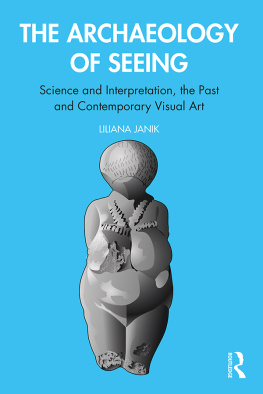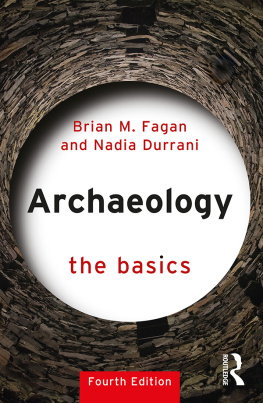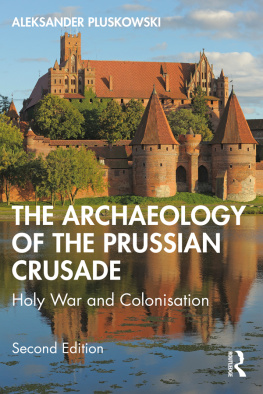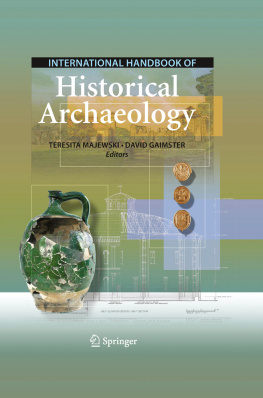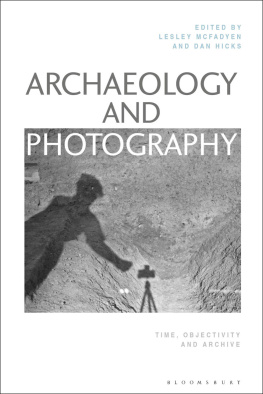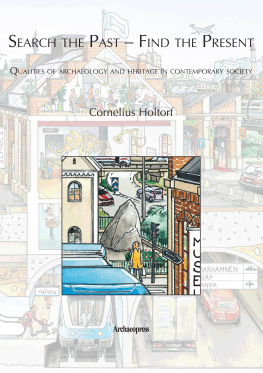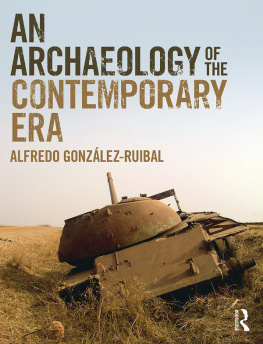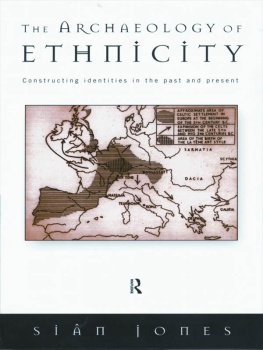The Archaeology of Seeing
The Archaeology of Seeing provides readers with a new and provocative understanding of material culture through exploring visual narratives captured in cave and rock art, sculpture, paintings, and more.
The engaging argument draws on current thinking in archaeology, on how we can interpret the behaviour of people in the past through their use of material culture, and how this affects our understanding of how we create and see art in the present. Exploring themes of gender, identity, and story-telling in visual material culture, this book forces a radical reassessment of how the ability to see makes us and our ancestors human; as such, it will interest lovers of both art and archaeology.
Illustrated with examples from around the world, from the earliest art from hundreds of thousands of years ago, to the contemporary art scene, including street art and advertising, Janik cogently argues that the human capacity for art, which we share with our most ancient ancestors and cousins, is rooted in our common neurophysiology. The ways in which our brains allow us to see is a common heritage that shapes the creative process; what changes, according to time and place, are the cultural contexts in which art is produced and consumed. The book argues for an innovative understanding of art through the interplay between the way the human brain works and the culturally specific creation and interpretation of meaning, making an important contribution to the debate on art/archaeology.
Liliana Janik is Assistant Director of Research, Deputy Director at the Cambridge Heritage Research Centre, and Fellow of Girton College, University of Cambridge. She leads research projects in Japan and Russia. She specialises in prehistoric art: rock art, sculpture, and neuroaesthetic approaches to art, as well as heritage of the landscape.
First published 2020
by Routledge
2 Park Square, Milton Park, Abingdon, Oxon OX14 4RN
and by Routledge
52 Vanderbilt Avenue, New York, NY 10017
Routledge is an imprint of the Taylor & Francis Group, an informa business
2020 Liliana Janik
The right of Liliana Janik to be identified as author of this work has been asserted by her in accordance with sections 77 and 78 of the Copyright, Designs and Patents Act 1988.
All rights reserved. No part of this book may be reprinted or reproduced or utilised in any form or by any electronic, mechanical, or other means, now known or hereafter invented, including photocopying and recording, or in any information storage or retrieval system, without permission in writing from the publishers.
Trademark notice: Product or corporate names may be trademarks or registered trademarks, and are used only for identification and explanation without intent to infringe.
British Library Cataloguing-in-Publication Data
A catalogue record for this book is available from the British Library
Library of Congress Cataloging-in-Publication Data
Names: Janik, Liliana, author. | Szczsny, Adam, illustrator.
Title: The archaeology of seeing : science and interpretation, the past and the contemporary visual art / Liliana Janik ; illustrated by Adam Szczsny.
Description: New York, NY : Routledge, 2020. | Includes bibliographical references and index. Identifiers: LCCN 2019034772 (print) | LCCN 2019034773 (ebook) | ISBN 9780367360252 (hardback) | ISBN 9780367360221 (paperback) | ISBN 9780429343339 (ebook)
Subjects: LCSH: ArtPsychology. | Art and society. | Archaeology and art.
Classification: LCC N71 .J36 2020 (print) | LCC N71 (ebook) | DDC 700.1/9dc23
LC record available at https://lccn.loc.gov/2019034772
LC ebook record available at https://lccn.loc.gov/2019034773
ISBN: 978-0-367-36025-2 (hbk)
ISBN: 978-0-367-36022-1 (pbk)
ISBN: 978-0-429-34333-9 (ebk)
for Simon and Kasia, the travel companions
Everything my body
remembers is older than
any form of memory
and my hands are archaeologists
Leiko Ikemura
Art has never been more ubiquitous, more accessible, or more contested than it is today. Now everyone can be an artist. And in this digital age the tools available to artists to convey their intentions have never been more powerful. Art is no longer restricted to the studio, the gallery or the collection. Art is everywhere even being launched into outer space. This book is an attempt to understand how we have arrived at this situation, and how art is so deeply implicated in the human condition.
I explore here prehistoric visual art as part of the wider phenomenon of non-verbal communication and establish linkages with the contemporary art world. Its main themes cross-cut major contemporary archaeological topics used in interpreting past communities through the analysis of the surviving traces of the visual aspects of their material culture. These topics include the role of visual material culture in creating and recreating group and personal identities; gender; communicating emotion through visual culture; the use of visual narrative in non-verbal communication within particular social contexts; and story-telling.
The book has three major objectives. It explores the role of the visual arts in creating and changing social and individual identities, using examples from culturally and economically different communities. It examines the relationship between visual art studies and archaeology, through a fresh look at how the visual arts impact our interpretations of the past as well as how major archaeological discoveries affect the world of art and artists. And it thinks through the theoretical and methodological concepts used in the formal and iconographic understanding of past and present, engaging in new ways with themes of portraiture; embodiment and disembodiment; performativity and gender; habitus and actor-network theory. These objectives are drawn together through an engagement with the field of neuroaesthetics, a fascinating new area of research which, based on the latest research into how the human brain works, has made great strides in understanding how art contributes to making us human.
The book explores new directions in the study of visual culture, by illuminating processes of non-verbal communication through visual art in the past, where the cultural context of creating such images and objects was substantially different from the modern day. The archaeological basis for the book challenges both how and what we see as human beings, and the way artists through time reflect the visual preferences of the cultures they lived in. The centre of the enquiry is the relationship between material culture and contemporary understanding of what art is.
I am not an artist. I identify very much as an archaeologist, and privilege archaeological discourse over other interpretations. I believe that it is only archaeology that can bring a new perspective to the understanding of art from its origins and the development of the creative process over the last hundred thousand years. Archaeology provides the bridge between the theoretical concept and topics brought to bear on past and present art objects, treating art both as part of human material culture and as part of the capacity of being human.
The study of the relationship between art and archaeology is thriving as never before. We have witnessed a tremendous outpouring of creativity in art and archaeology projects at the same time as major new discoveries from the most ancient past have transformed our understanding of the origins and breath of the human artistic endeavor. Many excavations now have on site artists, although it is perhaps fair to say that not so many artists studios have yet been subjected to archaeological investigation: maybe that is yet to come.

